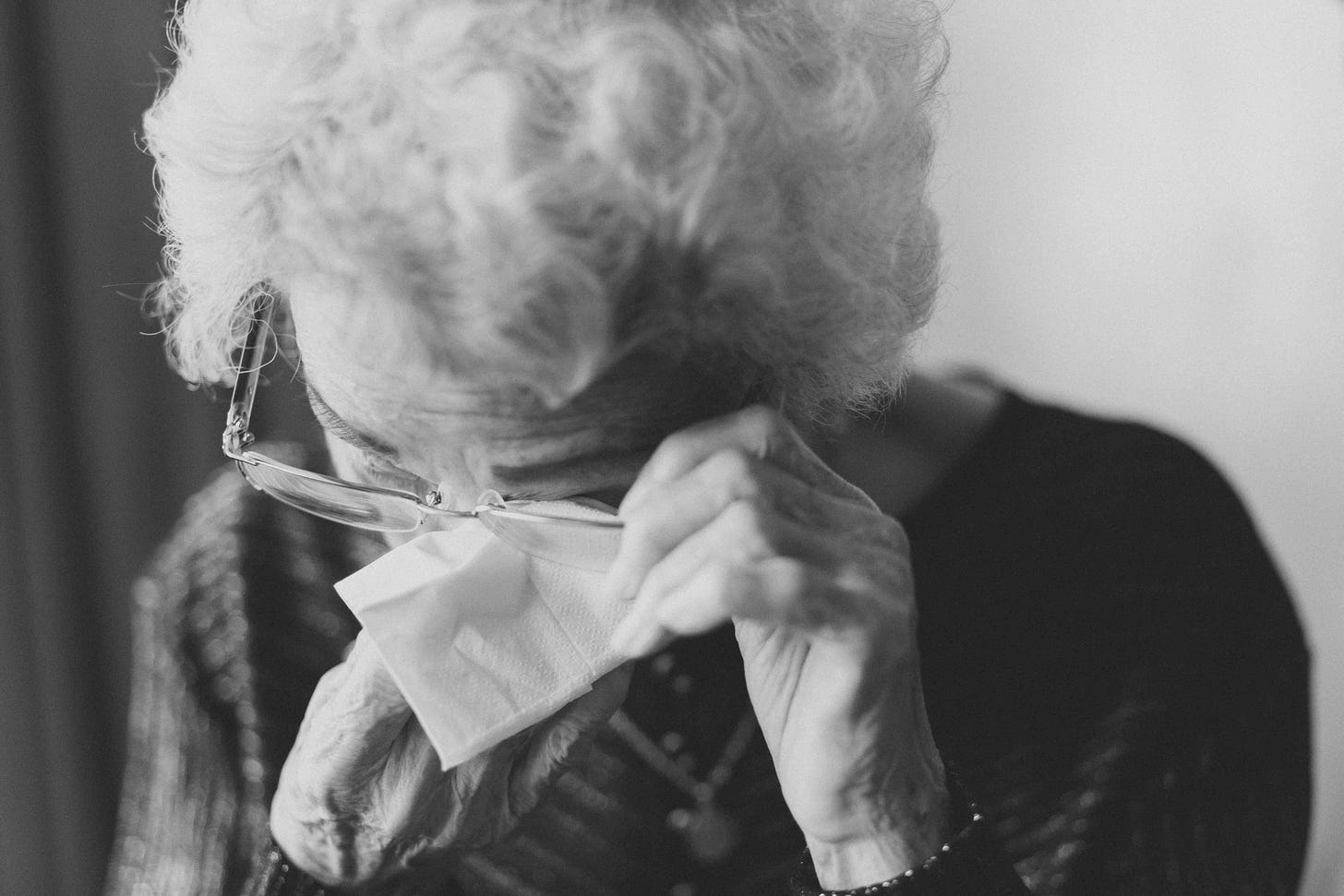Photo by Jeremy Wong on Unsplash
It must be true that I have mellowed with age. This is a good thing, as the angry-young-man schtick looks pretty ridiculous on genial old Pop Pop. But bullying is one exception that always makes my blood boil. I respond viscerally whenever I learn of the strong terrorizing the weak just because they can.
That’s why I get worked up whenever I read about elder abuse. Abusing an older adult weakened by illness, arthritis, cognitive decline, or other conditions is just as despicable as bullying the smaller, weaker kids on the school playground.
Yet it happens, with alarming frequency. Based on the number of older adults treated in emergency rooms, an estimated one in ten adults aged 60 and older living at home is a victim of some form of abuse. But it’s also widely believed that abuse is underreported. The National Crime Victims Survey finds that less than half of violent crimes against older adults are reported to police. In two-thirds of reported cases, the abuser is a family member. (Note: Abuse takes several forms, including physical, sexual, financial, emotional, or psychological abuse, as well as neglect. All abuse is horrifying, but this post concentrates only on physical abuse.)
The story for residents of nursing homes is even uglier. About 44% of nursing home residents report being victims of abuse – with nearly a quarter of that being resident-on-resident abuse – and 95% of nursing home residents say they have either experienced or witnessed neglect. In another survey, 50% of nursing home staff members admitted to abusing or neglecting residents in the previous year.
And this came as a shock to me: Older adults are even victims of human trafficking. The extent of the problem is hard to measure – in large part, because state and national monitoring agencies do not even track older victims – but there is clear evidence that elders are being trafficked for sex, for labor, and to exploit their benefits payments.
Elder abuse “is so prevalent it makes your head spin,” says Jacke Schroeder, director of Elder Abuse Awareness at CHANA, a Baltimore Jewish community agency that serves people who experience abuse. “It’s the most hidden criminal, human rights violation we have.”
Warning Signs
You may believe, as I did, that being bullied was one fact of life that I had happily aged out of. Not so. In a few years I could well find myself in the pool of vulnerable elders who are prime targets of bullies, be they peers, healthcare aides, or relatives. I dread the prospect of being a victim in my old age; being bullied was bad enough as a kid. As for today, there’s a high probability that an older adult you know is facing abuse.
Given its prevalence, we should be aware of the warning signs that someone you care for is being victimized:
unexplained burns, cuts, bruises, and bleeding
sprained or broken bones
injuries that happen more than once
reluctance to see a doctor about wounds
There are different warning signs of neglect:
messiness or uncleanliness – dirty clothes, unkempt hair, skin rashes
sudden weight loss or lack of appetite
bedsores
missing or broken dentures, eyeglasses, hearing aids, or walkers.
Reporting Is Also a Problem
If you believe someone you know is being abused, try to talk to them when the two of you are alone. Tell the person you’re worried and you think something is wrong. Offer to get help for them through a local adult protective services agency. The National Adult Protective Services Association website has phone numbers for programs in each state. The National Center on Elder Abuse website (currently under construction) has guidance on how to report abuse, where to get help, and state laws that deal with abuse and neglect.
That said, elder abuse is one social problem where the rapid increase in the older adult population has outpaced government responses at all levels. The Elder Justice Act was passed by Congress in 2010, but received no funding until 2015, when it was allocated a paltry $4 million to address this national problem. The Department of Justice used the funds to start an Elder Justice Initiative, but budget limitations constrict it to awareness activities. The human trafficking of older adults is not a crime in 49 states.
M.T. Connolly, founder of the Elder Justice Initiative, says the nation’s approach to elder abuse “is endemic to how we do things….We’re crisis-driven and reactive as opposed to being proactive. We do not get out ahead of problems.” On the other hand, she adds, American society could improve elder justice “if we can take it more seriously, prepare better for aging, and really appreciate the gift of time.”
If you’re angry and you know it, consider this your call to action.





I am fortunate that I work (perform) in quite a few "upscale" senior living homes but just because they are "upscale" , they are not necessarily free from abusive individuals.
I try to always be on the lookout for those who are abused or neglected. Many times, especially in memory care units, people are dumped and forgotten.
Thank you, Don, for this wake-up call!
Don, this is horrifying. I thought I was aware of elder abuse, but I had no idea of the sheer scale of it, nor did I know about trafficking. I wish I were more surprised. We need to take action, yes , demanding more attention and funding for the problem. We also urgently need a full and frank conversation about the widespread failure of empathy and compassion. I heard a UK radio interviewee yesterday ask "Where are the grown -ups?" In a nursing home being ignored and exploited, apparently.